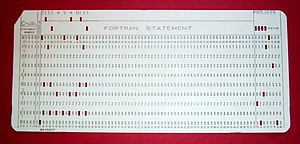Buckeye Buh Nim
Loving the Bucks since 1969
This is what we used in Jr. High School. (1981-1984)


Upvote
0
Follow along with the video below to see how to install our site as a web app on your home screen.

Note: This feature currently requires accessing the site using the built-in Safari browser.

Ditto. We spent hours oohing and aahing over repeating text strings in various colors and sizes. Look, we're programmers!NJ-Buckeye;895737; said:Commodore 64







Taosman;895803; said:If you dropped a deck there was indeed some trauma, but.......
" Columns 73-80 were ignored by the compiler and could be used for identification, such as adding a sequence number so that if the card deck was dropped it could be restored to its proper order using a card sorter."
:tongue2:

I believe that's a TI 99/4A....which was also my first....and it used TI BASIC. To relive the glory days, check out this site: The TI-99/4A Home Computer PageBuckeye Buh Nim;895668; said:
Ours- The TI-94A. Cartridge games, tape player for recording data/programs.
Programs written in BASIC. Ahhh the good ole days.

